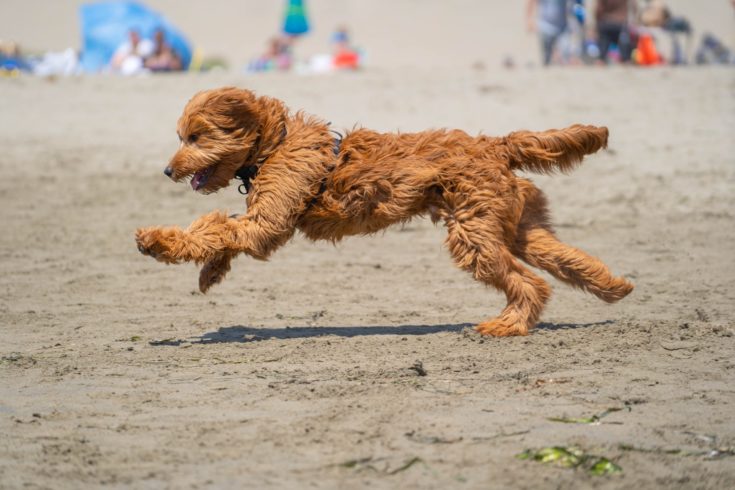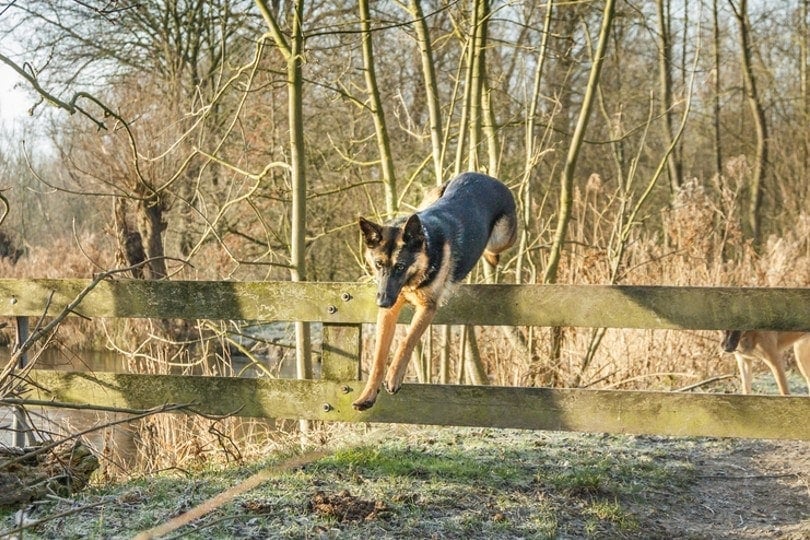Social Aggression In Dogs: What It Is & How To Stop It (Vet Reviewed)
Updated on

Click to Skip Ahead
Aggressive behavior in dogs can be a disheartening challenge, particularly when the dog is a beloved pet. There are many causes for canine aggression but this article will explore the ins and outs of social aggression. You may own or know of a dog that is exhibiting signs of aggression that you suspect to be socially motivated. Hopefully, after reading this article you will be able to either confirm your suspicion or consider other causes.
What Is Social Aggression?
How is social aggression discernable from other kinds of aggression? This is sometimes difficult to answer as there is frequently an overlap between different kinds of aggression and an interplay of several causes. Ascertaining the root cause can help to positively identify social aggression and develop an effective coping strategy.
Dogs are pack animals and within any pack, there is a strict social hierarchy. In the wild, this is necessary for the success of the pack and their survival. Social aggression is most likely to be observed in a dog that sees themself as having a high-ranking status. In a dog pack, each member understands and accepts their ranking thus inter-pack conflict is minimized. In a human-dog household, typified by multifaceted relationships, this can present problems for a dog that senses that his dominance is not being acknowledged.
Dominance is typically asserted over other pack members in shows of aggression such as growling, snarling, snapping, biting, and more. This is what we observe as social aggression. Unfortunately, there’s no telling who or what may be on the receiving end of these displays in the multi-species household. It is just as likely to be your ancient old dog, the mailman, you or your three-year-old toddler.
The reaction elicited from the humans in the household in response to the pooch’s display of aggression could further complicate matters. The immediate response is to quickly remove little Johnny or the new baby kitten from the snarling jaws of death, followed by an angry or fearful reprimanding of varying magnitude. This is often not the most constructive response and may perpetuate the dog’s aggressive behavior.

What Are the Signs of Social Aggression?
Most people recognize the obvious signs of aggression such as growling, snarling, barking, biting etc. When these signs are observed in combination with particular situations then there is a good chance they are indicative of socially aggressive behavior. Some of the causes and triggers of social aggression are discussed in the next section.
There are two challenges when it comes to discerning the signs of social aggression. The first is determining whether the aggression is a result of social or dominance-related issues. It could be masquerading as social aggression but stem from some other cause. Interpreting these signs may require the expertise of an animal behaviorist.
The second is noticing and interpreting other behaviors that seem benign but are less demonstrative indicators of social aggression that could worsen if not addressed. Some of the more obscure signs of social aggression are a stiff overbearing posture with the tail untucked, prolonged eye contact, placing a paw on some part of another dog’s body, or standing over the dog in an overshadowing manner. These behaviors may be exhibited with other species and humans, too.
What Are the Causes of Social Aggression?
There is only one cause for social aggression. As mentioned, it is a dominance response by a dog that perceives himself to be hierarchically superior. In any momentary act of aggression, the dog believes that its dominance is being contested.
Although there is a single simple cause, there are many triggers. Many of these may seem nonsensical to humans but to a dog they are all-important. A dog may become socially aggressive towards a human in response to these situations:
- Hugging, kissing or being picked up
- Being touched on the face or ears during grooming, petting or bathing
- Nail trimming, including touching the feet
- Verbal or physical threatening, or striking the dog
- Bending over the dog
- Being restrained
- Taking food or toys away
- Being disturbed whilst sleeping or resting
Equally, the socially aggressive dog may be triggered by other animals in the household doing things that they view as dominance-threatening. Other dogs in the household may understand where to draw the line to not set off the unpredictable moggie. However, different species may unintentionally fall victim to their temper due to a lack of canine hierarchy comprehension.
It is worth noting that social aggression, although certainly not restricted to, appears to be more common in male dogs.
Sometimes a dog may default to social dominance if there is inconsistent behavior and a lack of boundaries or structure put in place by the humans. We’ll expand on this in the next section.
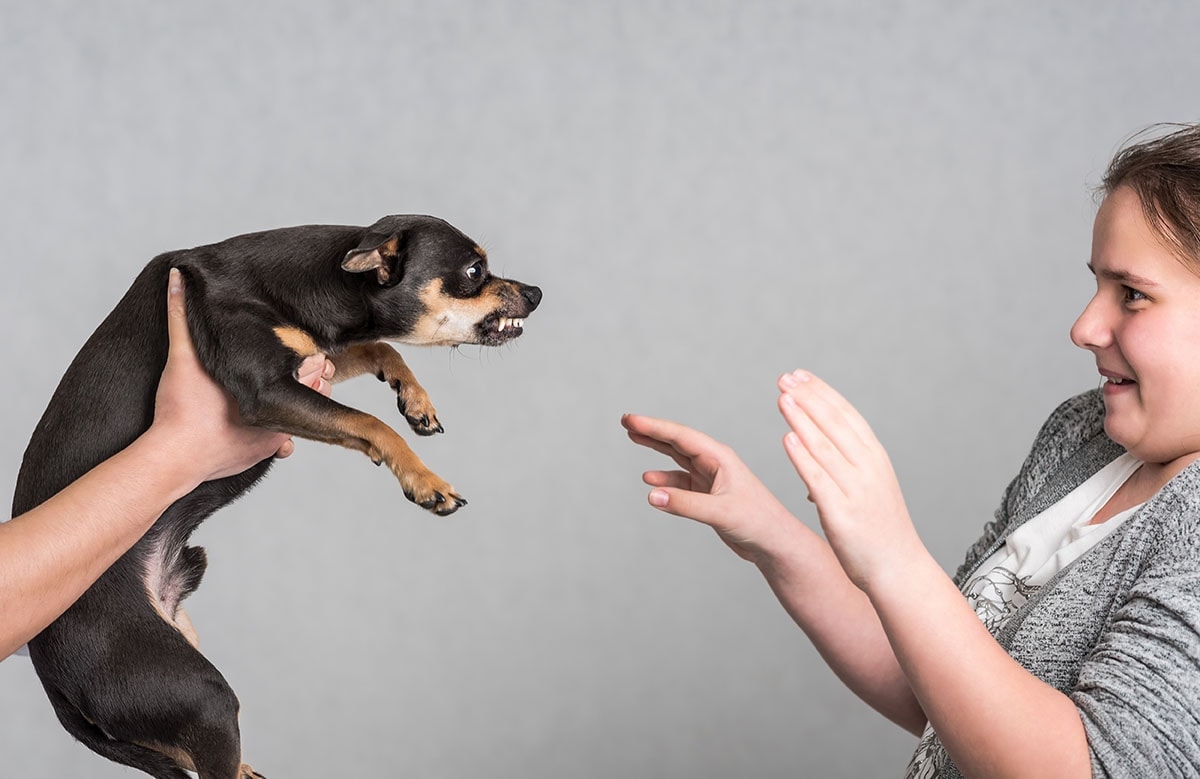
How Do I Manage a Dog With Social Aggression?
In comparison to other forms of canine aggression, social aggression is generally more benign—it doesn’t often result in full-scale fighting or vicious attacks. But, it can be more difficult to address. In most cases, it’s impossible to change the environment which consists of the household members, both human and of the furred variety. They are there to stay.
Fear vs Control
A further challenge is that social aggression is not very well-understood due to its complex nature. There is much dissent amongst canine behavior experts. There are two general schools of thought. Some experts believe that social aggression is fear based whilst others assert that it is anger and control-seeking behavior. In truth, one may be the cause in one dog and the other the cause in a different dog. It could even be that both are causes for the same dog, depending on the circumstances!
Understanding the basis of a dog’s social aggression is key to beginning to address it and manage it. An effective, consistent, and disciplined approach could even remedy the behavior completely and permanently. For this to be possible it needs to be addressed immediately. It may be necessary to try different approaches until it is clear that one is working.
The first thing to understand is that the owner of a socially aggressive dog needs to acknowledge both the dog’s and their own behavior and take proactive responsibility for it. It might not be anyone’s “fault”, but it still needs to be addressed. However, fault-finding may be the order of the day. It could be that certain owner’s behaviors, although well-meaning and stemming from love for their fur baby, are inadvertently propagating the dog’s undesirable behavior.
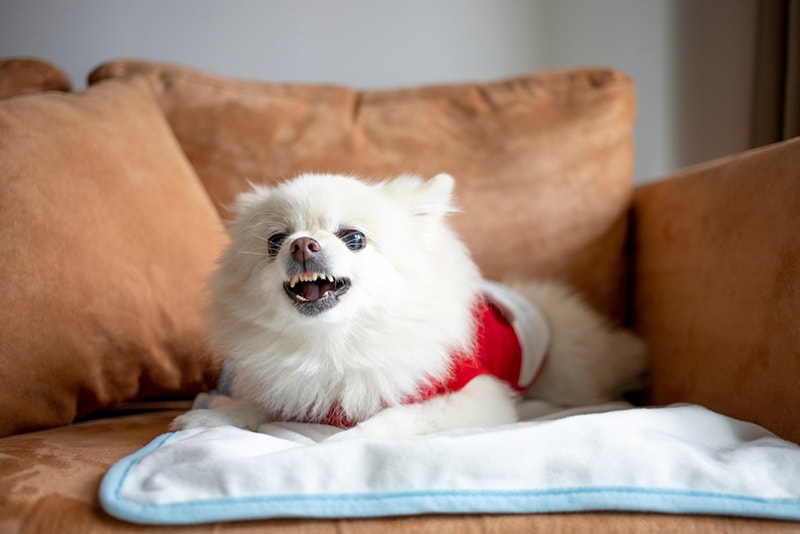
How to Handle a Socially Aggressive Dog
If a dog’s aggressive behavior is a danger to people or other animals it’s important to supervise it at all times. This may require limiting their movements, avoiding exposing them to triggering situations or even confining them to an area that is inaccessible to vulnerable subjects. This will need to be done until there is an improvement in the dog’s behavior following remedial therapy/treatment.
The best course of action, once it is realized that a dog is exhibiting social aggression, is to consult with an animal behavior specialist. They will spend time observing the dog and the social environment and then devise a plan to help alleviate the situation. They may also suggest sterilization if the dog has not been spayed or neutered already.
Some things can be done early on in a pup’s life that will help ensure that social aggression doesn’t develop. Socialization of puppies from a young age with a variety of other dogs, people, and animals is hugely beneficial towards teaching them to be comfortable and relaxed in many situations. Dogs often react to or mirror their owners’ fears and insecurities. From the beginning of the pup’s life, owners should be aware of their actions and reactions. Care should be taken to exude a consistently relaxed, albeit disciplined, attitude unless a situation realistically calls for fear and preemptive action.
Frequently Asked Questions About Social Aggression in Dogs
At What Age Do Dogs Begin to Exhibit Social Aggression?
A dog may begin to exhibit signs of social aggression between the ages of six months and three years old. This coincides with them maturing into adulthood.
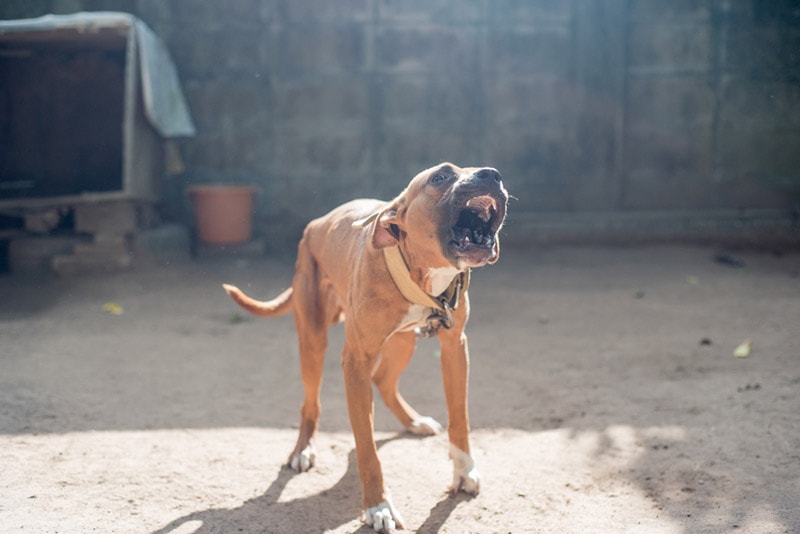
Will a Dog’s Social Aggression Get Worse With Age?
A dog’s preexisting social aggression is unlikely to get worse as it gets older. Equally, a dog that has never exhibited social aggression is unlikely suddenly to do so in its old age. An old dog can react dominantly if a new dog or puppy is introduced to the home, but this would not be considered unusual behavior.
Having said that, older dogs have the propensity to become a bit aggressive as they near the twilight of their existence. This is usually due to the physical, mental and emotional strains that accompany old age. For example, arthritis and senility.
Can a Socially Aggressive Dog be Rehomed?
In general, it is usually not ethically acceptable to rehome an aggressive dog. Even if there is full disclosure, it can place the new owner in a difficult situation as well as stress the dog out even more. This could result in an even more aggressive dog.
However, in the case of socially aggressive dogs, there may be particular circumstances when rehoming might be a good solution. If the dog is triggered by other dogs or animals, or even children then rehoming to a quiet, single-person home with no other pets could be just what is needed. If this is the case, both parties must be fully aware of the dog’s shortcomings and such a rehoming should be carefully orchestrated with a trial period.
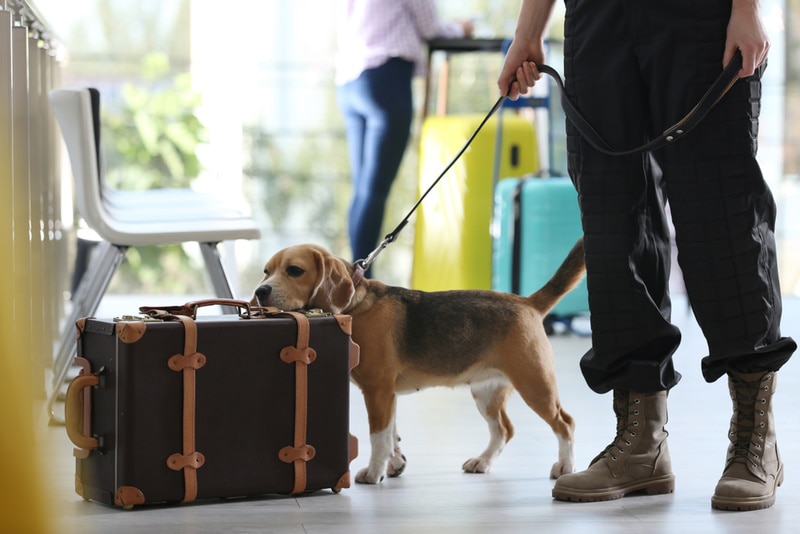
Conclusion
Social aggression in dogs can be a difficult condition to deal with. A diagnosis is not always clear-cut and there can be some doubt and confusion before an effective management strategy can be put in place.
Fortunately, it’s not all doom and gloom. Once the root cause of a dog’s social aggression is understood, certain things can be done to minimize or remedy it. Many dogs improve with the correct treatment and become less stressed, going on to be loving and rewarding pets.
Featured Image Credit: simonocampo999, Pixabay



